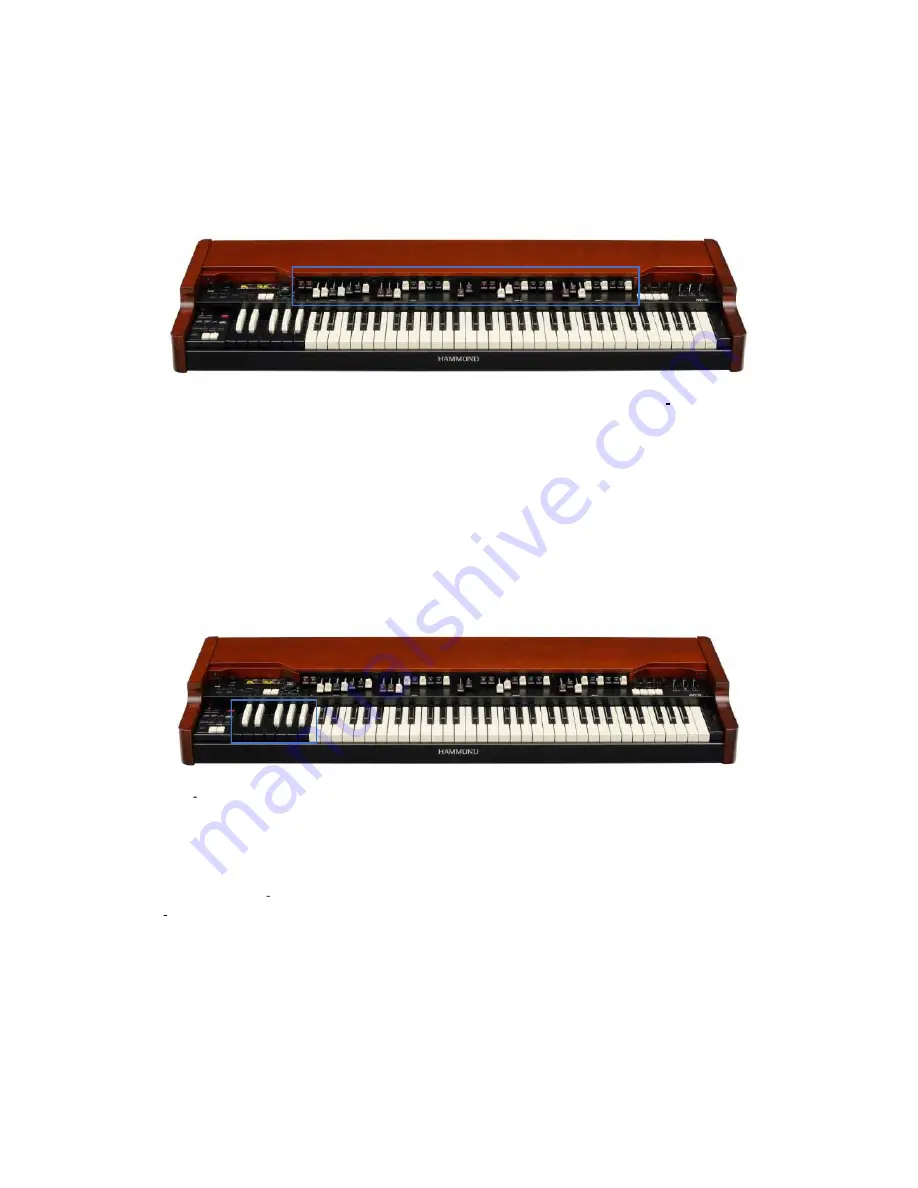
12
1. Drawbars
Some people call them sliders some call them tonebars," but the array in front of you, the Hammond Harmonic
Drawbars, are the heart and soul of the Hammond Organ. They are the tools by which you create your tone.
There are reasons for the numbers and colors, but for now lets just say there are 2 sets of 9 for the Upper (or
Swell) Manual, 2 sets of 9 for the Lower (or Great) Manual and 2 Drawbars for the Bass (or Pedal). Each bar
represents a Harmonic that goes from a low pitch on the left, to high pitch on the right. Although there are
many recognized standard settings, the rule is: move the Drawbars around until it sounds good to you. It is also
ok to pull them all out, but it might be a little loud. The other rule is, the fewer Drawbars out, the softer and
gentler the sound. With more Drawbars out, and the sound gets denser and more complex. Adjust accordingly.
2. Preset Keys
The reverse color keys to the left are your Preset Keys, similar as the presets youd find on a synthesizer. They
dont play notes, but call up combinations of Drawbars to give different sounds. The Drawbars wont move when
you call a Patch with the Preset Keys, just as they didnt on Vintage Hammonds, but the sounds change
nonetheless.
Out Of The Box the XK 5 Presets match the Factory (or Liturgical) set as was shipped from 1935 to 1974 on
each B 3 leaving the Hammond Factory. If youre a longtime Hammond Player you will immediately recognize
these sounds. The Patches begin on C# and continue to A." The Patches go from soft to loud the further you go
up the Preset Keys. The low C is a Cancel which renders that particular Manual silent.
Содержание XK-5
Страница 1: ...1 Quick Start Guide...
Страница 41: ...39...















































